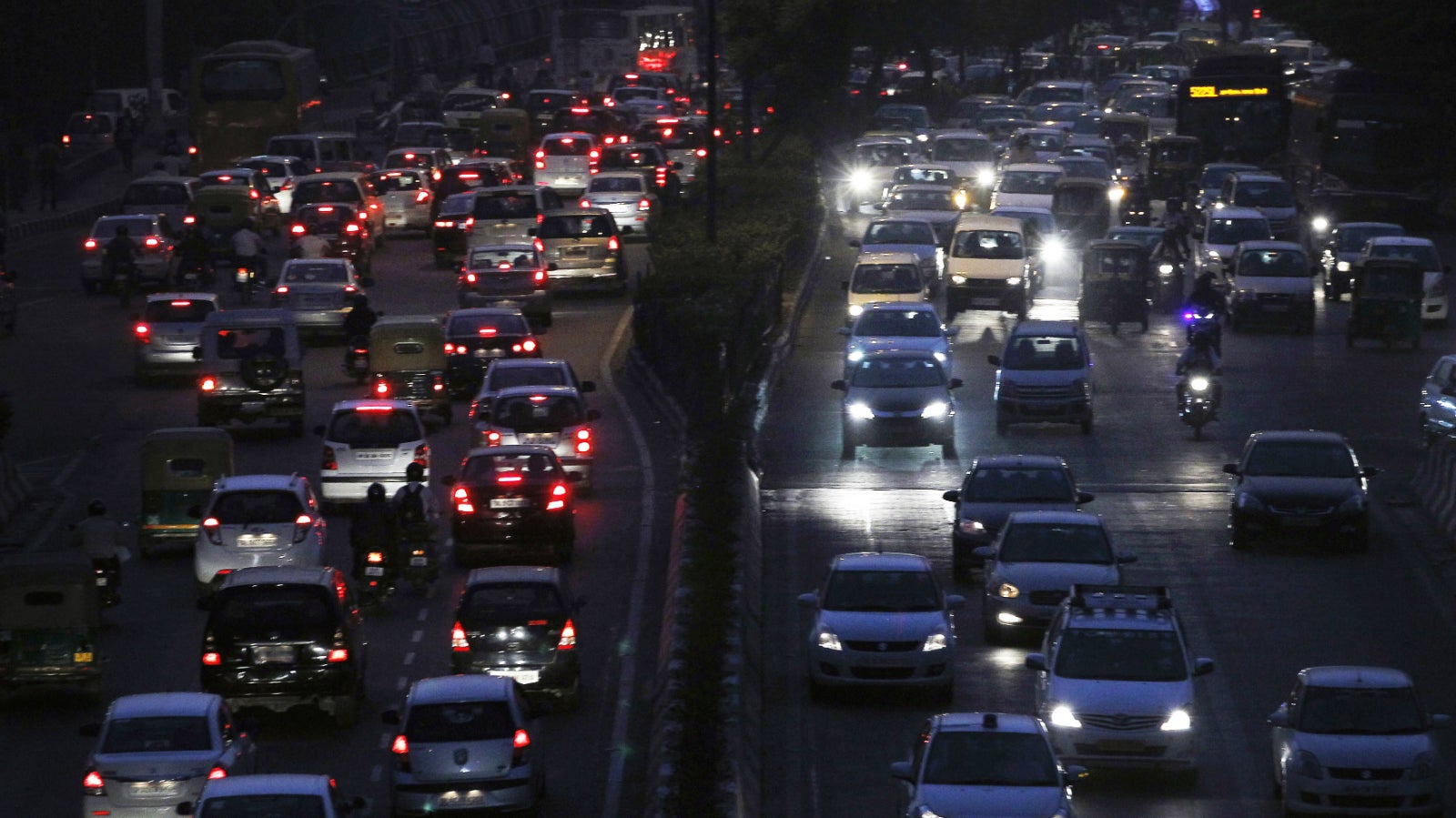The Delhi-Gurugram office commute spans two states and three modes of transport
My parents were mildly shocked this July 19 to see the morning person in me.


My parents were mildly shocked this July 19 to see the morning person in me.
Up by 6:45am, I was already leaving home by 8.30am, having gulped down steaming uthappams (a type of pancake) and a piping hot cup of tea even as I scanned my emails and the day’s news. I had a rough idea of how, when, and what I needed to do to reach my destination. But then, in India’s capital, planning never really mattered, fortitude did.
A short auto ride later, I was at the busy Jor Bagh Metro Station in South Delhi.
After a brief, mild, and informal bout of wrestling with a bunch of equally hurried commuters, I managed to get my bag scanned and enter a packed ladies compartment by 9.10am. Needless to say, there was no point in trying to get a seat. Around me, travellers had tuned in to music, videos, and social media sites on their mobile phones. Some had even begun working, sometimes mildly frustrated with the intermittent network.
Resigned to a 40-minute standing trip across 12 stations, I finally gave a thought to my destination: Gurgaon, now Gurugram.
Travelling over the years
A boomtown in the nearby state of Haryana, Gurugram was till over two decades ago a virtual no-go area for most Delhiites for multiple reasons. This included a lack of dependable transport and an unenviable reputation, given its scanty population and unsafe roads and neighbourhoods.
Located some 30 kilometres south-west of Delhi, today it is a darling of the capital’s shoppers and foodies. It is also, of course, a corporate hub where the likes of Google, KPMG, Nestle, Uber, and Hero Motors have made a home.
Having lived in Delhi for three decades, one couldn’t help think of this transformation. Delhi, home to 29 million people today, itself has changed right before our eyes. Over 10 million vehicles choke its roads every single day now. The road traffic in the city is so bad it makes headlines for not just the frequent gigantic jams but also for the health hazard it has become.
And that’s precisely why the Delhi Metro, introduced in 2002, is a boon to the over 2.2 million people it carries in, out, and around the city. The Delhi-Gurugram stretch of this service perhaps takes the cake.
But then it wasn’t always the case.
Even a decade-and-a-half ago, travelling to and from Gurugram was nearly impossible for those who didn’t own a vehicle. The options then included the rickety Haryana Roadways buses or shared cabs (pre-Ola/Uber days).
I recall such a trip made with a friend during my school days in the early 2000s. The return journey remains fresh in my mind for its many anxious moments. Having got into a dingily-lit government bus from one of the fancy malls at around 6pm, we alighted in Southwest Delhi well past 7pm. By then, usually, Delhi parents are worried sick, especially for their girls. My friend and I swore that day to never get adventurous again.
Cut to 2018.
One of the Delhi Metro’s pivotal arms, the 48-kilometre, 37-station Yellow Line, connects Samaypur Badli in North Delhi to HUDA City Centre in Gurugram, passing through the nerve centre of Rajiv Chowk in Lutyen’s Delhi. This one line alone carries close to a million commuters daily.
What was a two-hour, anxiety-filled, and sweaty trip two decades ago is now a reasonably comfortable hour-long journey. This relative ease really hides the logistical and engineering marvel the Metro is for us Delhiites, weaned on decades of creaky transport infrastructure.
Make no mistake. My experience and memory do not imply that Delhi is some kind of commuter’s haven today.
Twenty-two-year-old Rohan Sharma, whom I was scheduled to meet in Gurugram last month, would surely take offence at the suggestion. After all, he spends roughly Rs3,500 ($51) every month on his four-hour, 45 km daily commute between home in Northwest Delhi’s Rohini to Gurugram.
But the city has indeed come a long way. On my way back this time, I was spoilt for choice: Metro, call-taxi and regular cabs, besides the good old government buses.
Some debilitating problems persist, though: The infamous Gurugram traffic, the sweltering heat (41 degrees at one point), and the thought of travelling alone as a woman, especially late at night.
As the evening drew to a close and much before the rush-hour road chaos intensified again, I opted for a shared cab ride. But I changed my mind promptly at the sight of two male passengers in the car. In Delhi, you can never be too cautious. So a single ride it was for me, starting at 5:20pm. By 6:45pm, I was back home.
A friend who works in Gurugram called me at 7pm saying she was stuck in traffic. “I’m tired,” she said, wistfully discussing the sweet possibility of getting a job closer home in the south of Delhi.
Metro, I whispered to her, as much as to myself. Delhi Metro.
This piece is part of Quartz’s The Commute series in which we bring you the quintessential experience of commuting during peak hours in some of India’s biggest cities. We welcome your comments at [email protected].